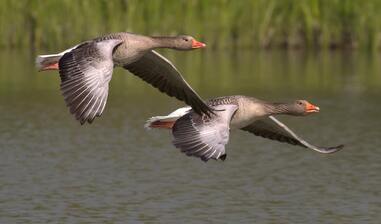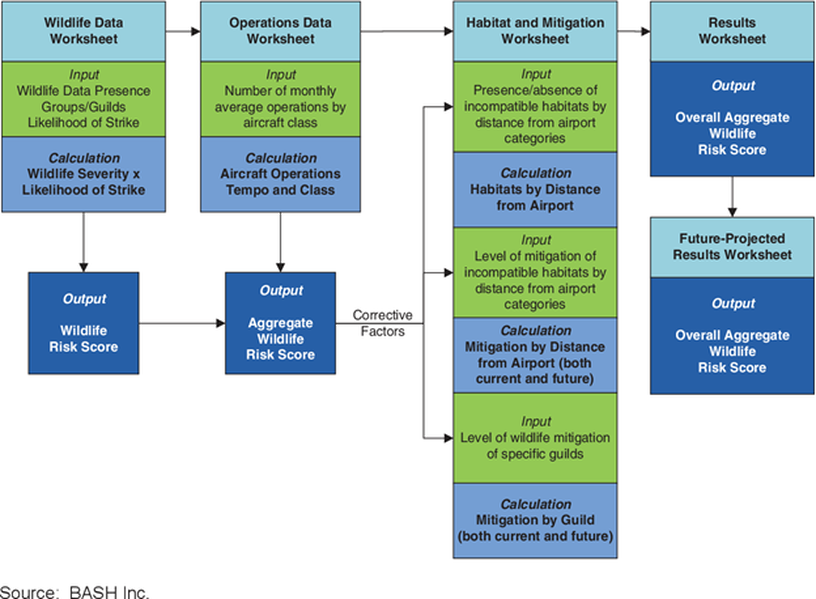 Deer, Vultures and Geese. These 3 species groups take the Gold, Silver and Bronze medals for damaging aircraft as ranked by the FAA (Federal Aviation Administration) and as such are the top 3 thorns in the side for airport managers and wildlife professionals alike. By no means though are these the only threats to aviation, with coyotes, cormorants, and various raptors amongst the dozens of species that must be dealt with to protect an airport from damaging strikes. Every airport deal with wildlife in one form or another, from the heavy deer populations in the East to the huge waterfowl migrations of the West. We all deal with it, but how to we know how bad we really have it? What if there was a software program that allowed airport staff to succinctly rank their airfield to know how much of a threat their local deer population poses to their aircraft? Well, you are in luck! This program already exists, and its name is WHaMRAT. The “Wildlife Hazard and Management Risk Assessment Tool”, which is a long way to say WHaMRAT, is a dynamic modeling tool which takes your wildlife data, in addition to their own formulas within a plug-n-play style spreadsheet (actually 3 spreadsheets in total) to produce a score to reflect your airport’s Overall Aggregate Wildlife Risk (OAWR). This is a scale-based score, with a range of 1-5, with 1 being the low and the 5 the high score. So, this scale is more like golf than it is like baseball, with the lower scores coming out on top. So what information is required for this program to work? I am glad you asked. This formula takes 4 factors into account, including 1) wildlife presence/abundance, 2) monthly average aircraft ops, 3) incompatible locations of current habitat and 4) current mitigation actions for both habitat and wildlife. In addition to rating current efforts, future mitigation can be added to the equation to assess its effectiveness, known in the program as Future-Projected Results. In addition, this program is also separated into 2 versions, EZ and Advanced. For most users, the EZ version will give a comprehensive overview, while the Advanced version gains more detail via using fewer general data, such as gauging the likelihood of the strike for a specific species rather than using a group/guild like in the EZ format. Taking a small step back to the three spreadsheets required to gain the Overall Aggregate Score, first you must calculate your Aggregate Wildlife Risk Score, which involves the presence/abundance of guilds as well as their likelihood of a strike. The second sheet concerns Ops, with Monthly Average Aircraft Operations taking the number of operations, with aircraft type also coming into play to gain the Operations Adjustment. The final computation is the Habitat Adjustment – Mitigated. This score is governed by the presence/absence of incompatible habitat and its distance from the airport. Any mitigation of incompatible habitat as well as mitigation of specific wildlife guilds are also considered in this spreadsheet. Each of these scores will plot onto a pre-determined graphic, which highlights wildlife risk versus each adjustment in a color-coded scale (Green, Yellow, Red). Once your individual scores have been calculated and plotted, they can then be plugged into the fourth and final worksheet, which takes each of these outputs, and pops out your Overall Aggregate Wildlife Risk Score, which can then be plotted onto its own graphic. In summation, WHaMRAT provides every airport, regardless of type or size, with a comprehensive score for the assessment of the severity of their wildlife risks. It should also be noted that these scores are dynamic as well, so in the coming years, as airfield continue to mitigate their hazard risks, these scores and their amendments can show numerically the efforts of an airport to reduce hazards to increase safety for everyone to easily recognize. To learn more about WHaMRAT, you can find the entire text of the publication of text can be found on The National Press website titled “Applying an SMS approach to Wildlife Hazard Management”. Or fill out the contact fields below and someone from Loomacres will reach out. Loomacres - 800-243-1462 Bringing Wildlife Management to a Higher Level ©
1 Comment
Enrique Pasillas
2/15/2023 10:39:45
Hi there!
Reply
Leave a Reply. |
Sales & Marketing
|

 RSS Feed
RSS Feed